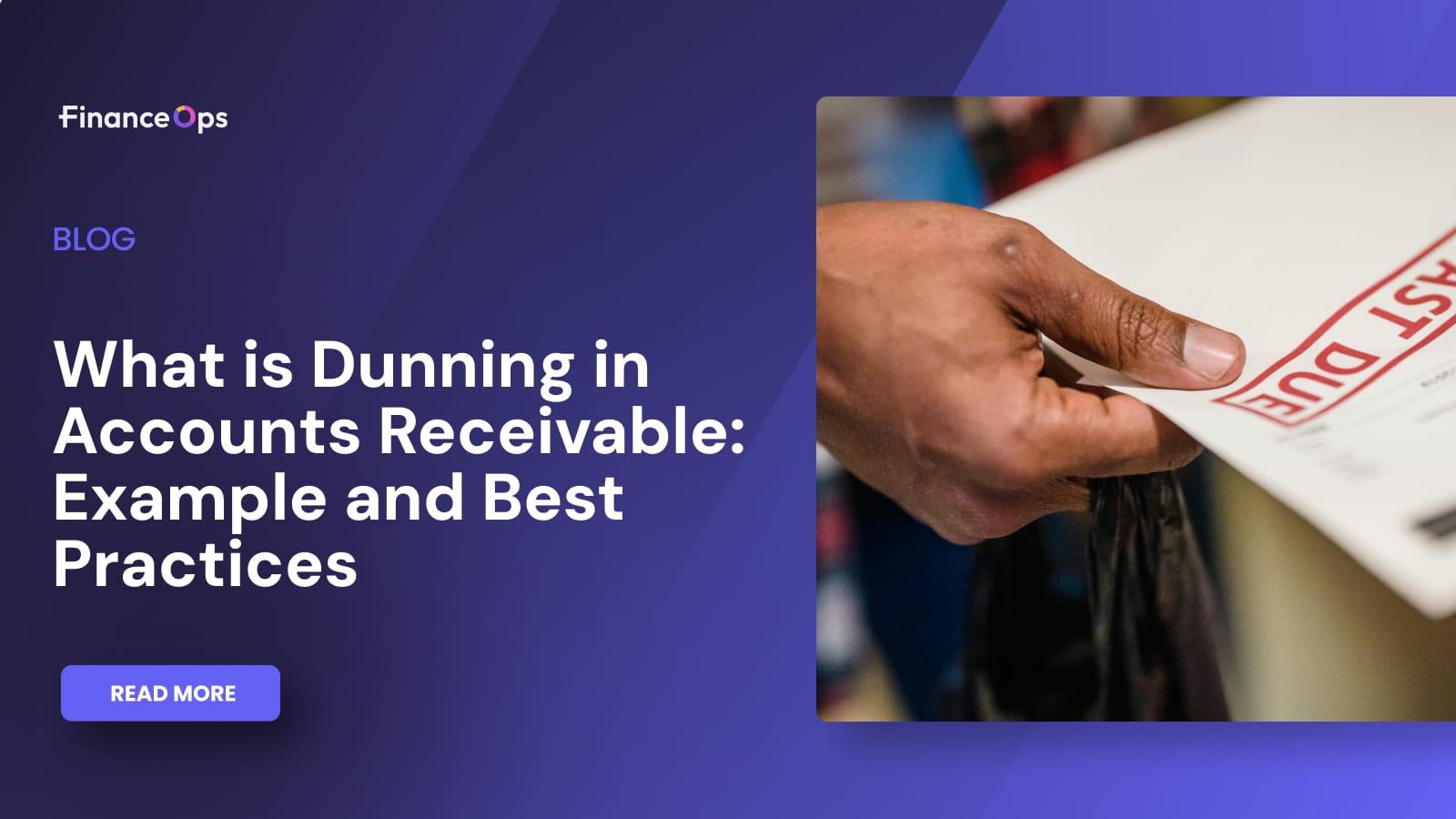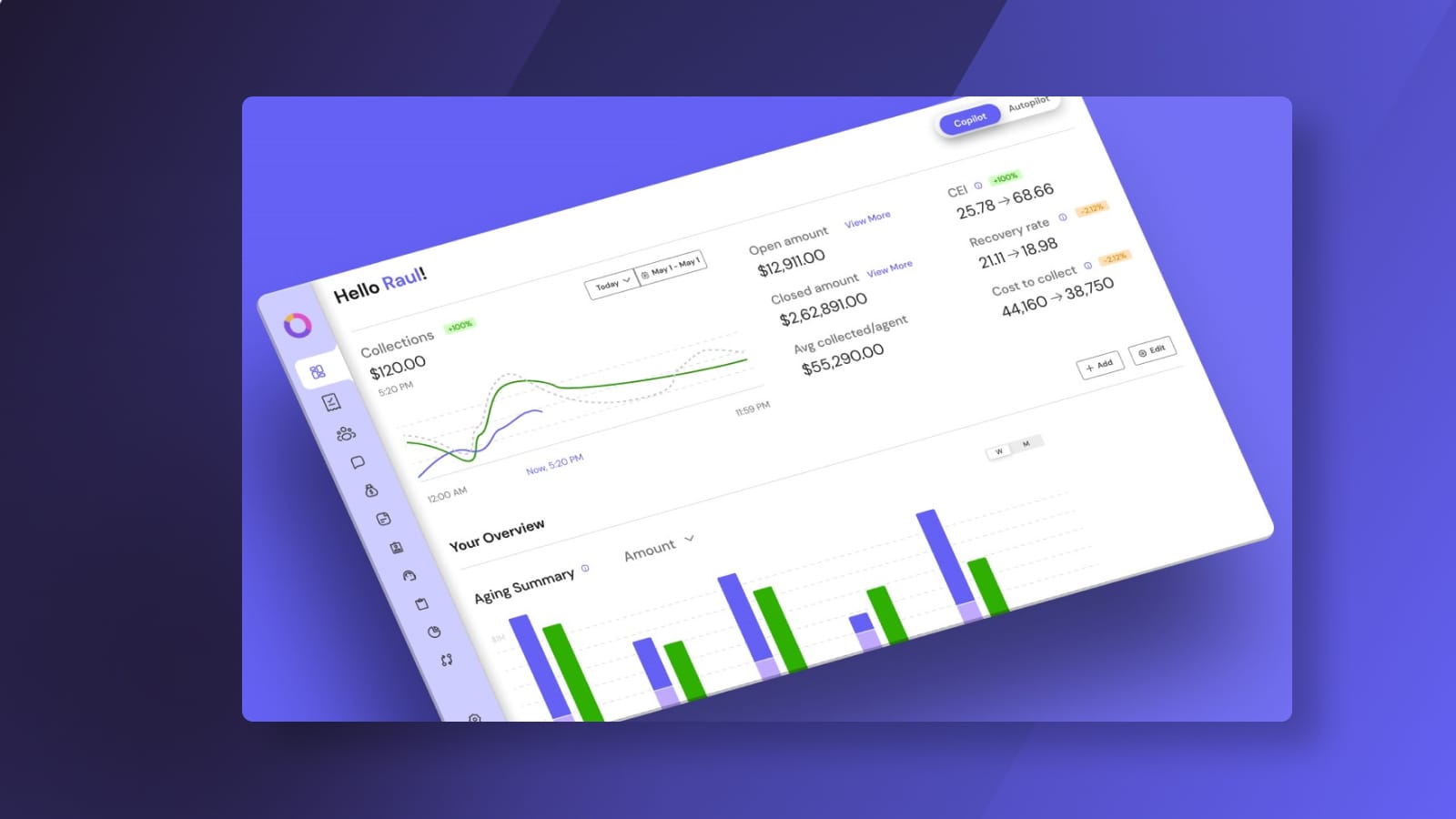What is Dunning in Accounts Receivable: Example and Best Practices

The term ‘dunning’ originated in the 17th century, referring to persistent requests for payment, while today, it has evolved into a series of automated or manual follow-ups, including letters, emails, and phone calls.
An effective dunning process helps recover unpaid debts and preserves customer relationships when handled with professionalism and empathy. For example, a well-crafted dunning letter may offer flexible payment options, ensuring customers are more likely to settle their accounts while avoiding confrontational language. It also increases responsiveness and reduces the chances of being ghosted by a customer.
It explains how important effective dinning is for businesses. So, in this blog, we will learn about it in more detail, understand how it works, its benefits, and the best practices to follow while implementing it.
What is Dunning?
Dunning is the process of systematically following up with customers who have overdue payments. It involves sending reminders and notifications to encourage debtors to settle outstanding invoices. These communications, often in the form of letters, emails, or phone calls, aim to recover unpaid amounts while maintaining a professional relationship with the customer.
The process begins when companies send polite reminders when payments are overdue, but as the debt remains unpaid, the tone of these communications may become firmer. Some dunning processes also offer customers payment plans, discounts for prompt payment, or additional fees for late payments.
An efficient dunning process helps companies recover outstanding debts and plays a vital role in cash flow management. Companies that use automated dunning systems often see a reduction in overdue accounts and increased customer retention.
However, handling dunning professionally and empathetically is crucial to preserving long-term customer relationships while recovering overdue payments. The key to successful dunning is balancing persistence with a customer-focused approach.
How Does the Dunning Process Work? A Step-by-Step Guide

The dunning process is a structured method for reminding customers about overdue payments. It typically involves a series of communications that escalate in urgency, from polite reminders to more assertive collection efforts. Here's a step-by-step guide for implementing it in your collection team.
1. Invoice due date reminder
A reminder is sent a few days before the payment is due to ensure the customer knows the approaching deadline. This is often a gentle, automated email that encourages timely payment.
2. First dunning notice (polite reminder)
A first dunning notice is sent if the payment isn’t received by the due date, typically via email or letter. This friendly message reiterates the payment due and offers assistance if the customer is experiencing difficulties.
3. Second dunning notice (firm reminder)
A second notice is sent after a set period, usually 7–14 days after the due date. The tone is firmer, reminding the customer of their overdue payment and the need for prompt resolution.
4. Final dunning notice
If the debt remains unpaid, a final notice is sent, often highlighting possible consequences, such as late fees or suspension of services. It may also suggest payment plans or other solutions to resolve the debt.
5. Escalation (collections or legal action)
If all previous efforts fail, the debt is escalated to a collections agency, or legal proceedings may be initiated. Customer communication may cease at this stage, and third-party action may be taken.
Example of the Dunning Process
The dunning process often varies depending on the customer’s payment history, communication, and the company’s internal policies. Here are some unique scenarios and examples that reflect different stages of overdue payments:
1. First-time late payment: gentle nudge
Situation: A usually prompt customer has missed their payment for the first time, now 5 days overdue.
Example: "Hi [Customer], we noticed your payment for Invoice #1001, due on [date], hasn’t come through yet. It might’ve just slipped through your busy schedule! If you need a hand with anything, don’t hesitate to contact us. We truly appreciate your promptness in this matter."
2. Repeated late payments: firm but supportive
Situation: A customer has a history of paying late and is now 14 days overdue for the second time.
Example: "Dear [Customer], we’ve noticed that your payment for Invoice #2054, originally due on [date], hasn’t been made yet. We understand things happen, but to avoid interruptions to your account, please pay by [new date]. Let us know if you’d like to discuss payment options, as we’re here to help!"
3. Long-term customer: personal approach
Situation: A loyal customer is now 30 days overdue and hasn’t responded to previous reminders.
Example: "Dear [Customer], we’ve worked together for a long time and always appreciated your partnership. However, it’s been over a month since Invoice #3099 was due, and we haven’t heard back. Can we find a solution that works for both of us? Please let us know how we can assist in clearing this up by [deadline]."
4. Final notice: strong action with options
Situation: A customer is 45 days overdue and hasn’t responded to any attempts to contact them.
Example: "Hello [Customer], we’ve reached out several times regarding Invoice #4567, which is now 45 days overdue. If payment isn’t received by [date], we may need to involve a collections agency. That’s the last step we want to take, so please contact us right away to resolve this. We’re still open to discussing payment options that suit your situation."
5. Escalation: professional tone with legal consequences
Situation: A customer’s payment is now 60+ days overdue, and previous efforts to collect have been ignored.
Example: "Dear [Customer], we regret to inform you that despite multiple attempts to resolve this matter, Invoice #7890 remains unpaid after 60 days. If payment is not received within the next 5 business days, we will have no choice but to escalate the matter to our legal department for further action. Please contact us immediately if you wish to avoid this step."
5 Benefits of implementing an effective dunning process

An effective dunning process is more than just a series of payment reminders. It helps businesses recover overdue payments while maintaining positive customer relationships. By streamlining this process, companies can reduce payment delays, improve cash flow, and prevent small debts from escalating. Here are five unique benefits of a well-implemented dunning strategy:
1. Boosts customer retention through empathy
A thoughtful dunning process, focused on understanding customers’ financial situations and offering flexible solutions, can will likelystrengthen customer loyalty. By offering support instead of aggressive demands, businesses foster a sense of trust and empathy, keeping clients around even after payment delays.
2. Reduces administrative workload with automation
Automating the dunning process saves time for finance teams by scheduling reminders and escalating actions without constant manual intervention. This frees up staff to focus on more complex financial tasks while ensuring consistent follow-ups on overdue payments.
3. Improves cash flow predictability
An organized dunning process helps businesses better predict when overdue payments will likely. Companies can improve financial planning and avoid cash flow shortages by knowing when to expect payments based on historical dunning timelines.
4. Minimizes the need for collections agents
Early and effective dunning communications can prevent overdue accounts from reaching the stage where third-party collections are necessary. By promptly addressing the issue, companies can avoid the additional costs and negative customer impact of sending debts to collections.
5. Enhances customer data insights
Through the dunning process, businesses gather valuable insights into customer payment behaviors. Analyzing this data can help identify trends in late payments, allowing businesses to adapt their payment terms or offer customized solutions that align with their customers’ payment habits.
12 Best Practices to Improve the Dunning Process
A well-structured dunning process can significantly enhance a company’s ability to recover overdue payments while preserving strong customer relationships. Refining your approach and communication can minimize delays, reduce customer friction, and streamline your accounts receivable operations. Here are 12 best practices to improve your dunning process:
- Segment customers based on payment behavior: Tailor your dunning strategy by categorizing customers based on their payment history. Loyal customers with occasional delays may need softer reminders, while chronic late payers require more assertive follow-ups.
- Send reminders before the due date: Proactively send a reminder a few days before the payment due date. This shows professionalism and ensures customers are aware of the approaching deadline, reducing the chances of unintentional delays.
- Use multi-channel communication: Leverage multiple channels—email, SMS, and even phone calls—to ensure your messages reach the customer. Some customers may respond better to one channel than another, so diversifying increases the chance of prompt payment.
- Personalize your dunning messages: Avoid generic templates and personalize your dunning messages with the customer’s name, account details, and a friendly tone. A personalized approach fosters a sense of rapport and urgency.
- Offer flexible payment options: When customers struggle to pay, offer them flexible payment plans or extensions. This increases the likelihood of recovery and shows that you value the relationship.
- Keep a consistent tone and schedule: Ensure that the tone of your dunning messages escalates gradually—starting with friendly reminders and becoming more assertive over time. Also, keep your follow-up schedule consistent, sending reminders at regular intervals.
- Include consequences for non-payment: Make clear in your final dunning notice what actions may be taken if the payment isn’t received, such as late fees, service suspension, or escalation to collections.
- Automate your dunning process: Use automated tools to schedule and send reminders, ensuring timely follow-ups without manual intervention. Automation also reduces the risk of human error and keeps the process efficient.
- Provide self-service payment options: Include links in your dunning messages to allow customers to pay easily via an online portal. The fewer barriers to payment, the quicker they are likely to act.
- Track customer engagement: Monitor whether customers are opening your emails or engaging with your communications. If they’re not responding, consider escalating the process to a phone call or additional channels to capture their attention.
- Use friendly language early on: Start with a polite and friendly tone in the early stages of the dunning process. Showing understanding and maintaining a professional demeanor early helps avoid souring the relationship while increasing the chances of payment.
- Review and refine the process regularly: Regularly analyze the performance of your dunning process. Look at response rates, timing effectiveness, and customer feedback, then adjust your strategy to continuously improve recovery rates and customer satisfaction.
How Can FinanceOps Help You Automate Your Dunning Process?

FinanceOps’ Genesis One platform simplifies and automates the dunning process, helping businesses recover overdue payments efficiently while maintaining customer relationships. With its AI-powered capabilities, the platform offers seamless automation for every stage of the dunning cycle, from polite reminders to escalated actions.
Its autonomous collections feature sends personalized reminders via multiple channels—email, SMS, or even automated voice calls—based on customer behavior and payment history. This ensures that follow-ups are sent at the right time, with the appropriate tone, without manual intervention.
By using FinanceOps, businesses can also set up customizable workflows, adjusting the frequency and style of reminders according to different customer segments, making the process highly targeted and efficient.
Additionally, the platform’s AI automation and workflow optimization tools allow for real-time payment patterns and customer engagement monitoring. This enables businesses to adjust their approach dynamically, improving collection outcomes.
By leveraging FinanceOps, companies can reduce the administrative burden of manual follow-ups, enhance cash flow predictability, and minimize the need for third-party collections while maintaining a positive customer experience.

